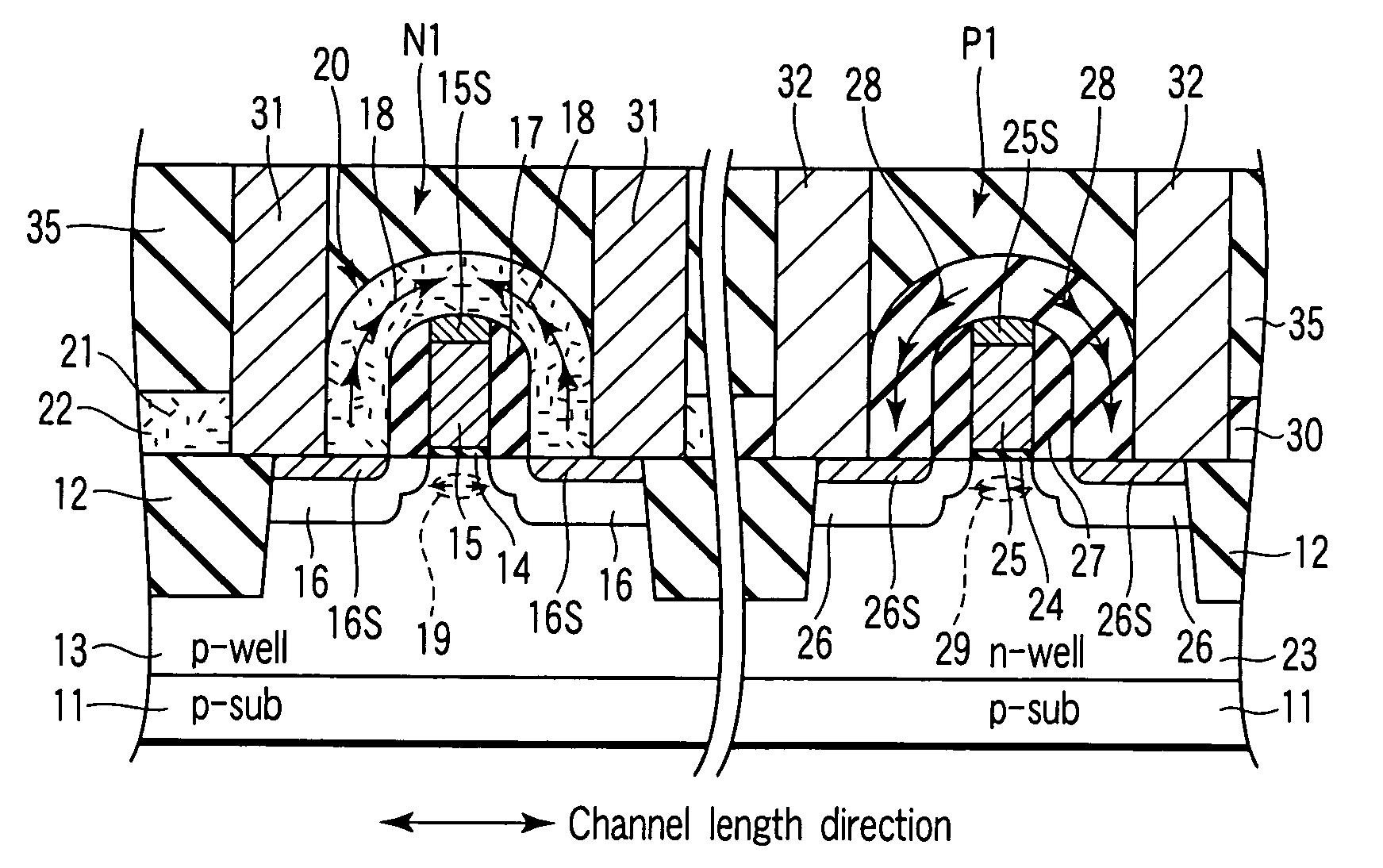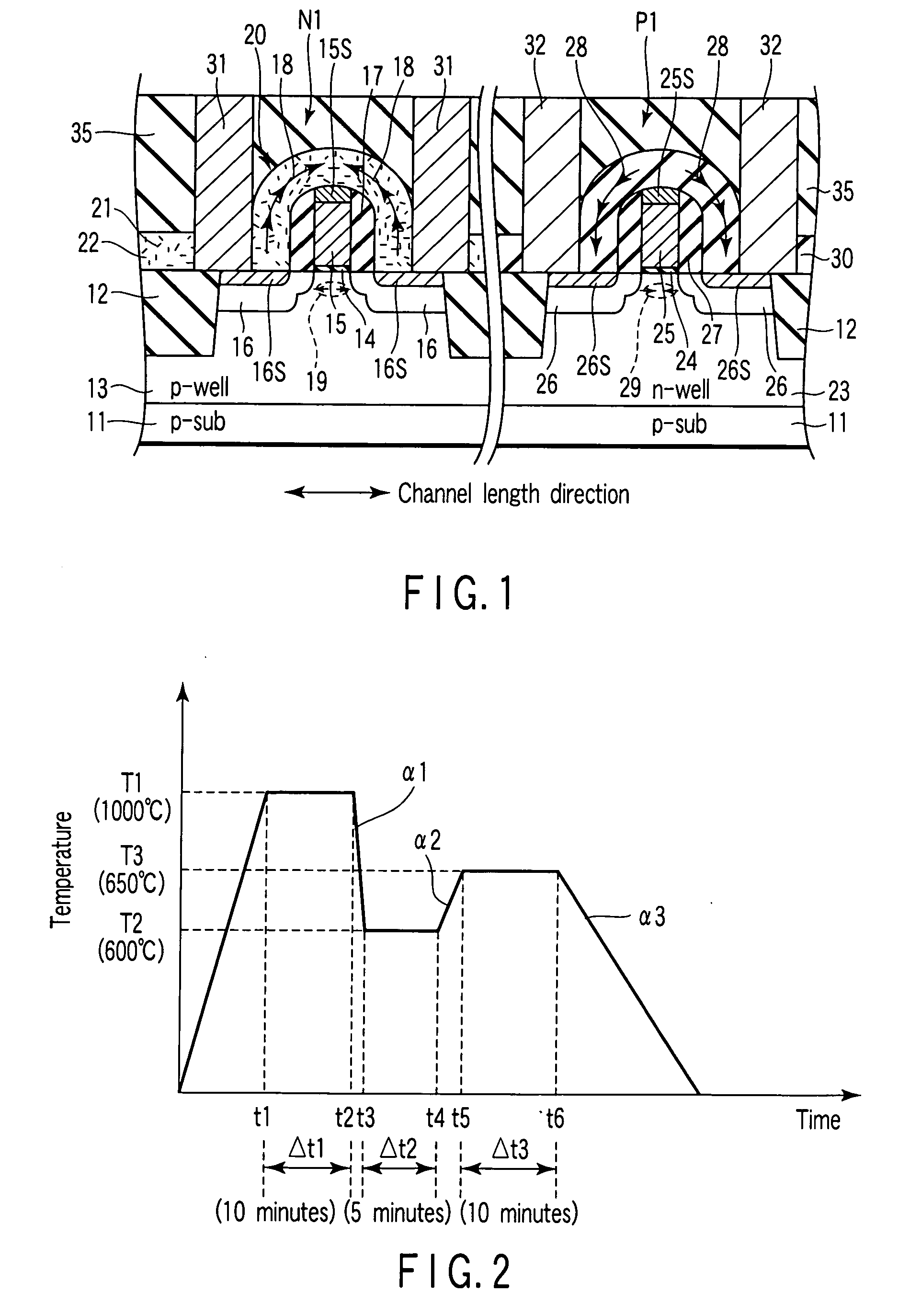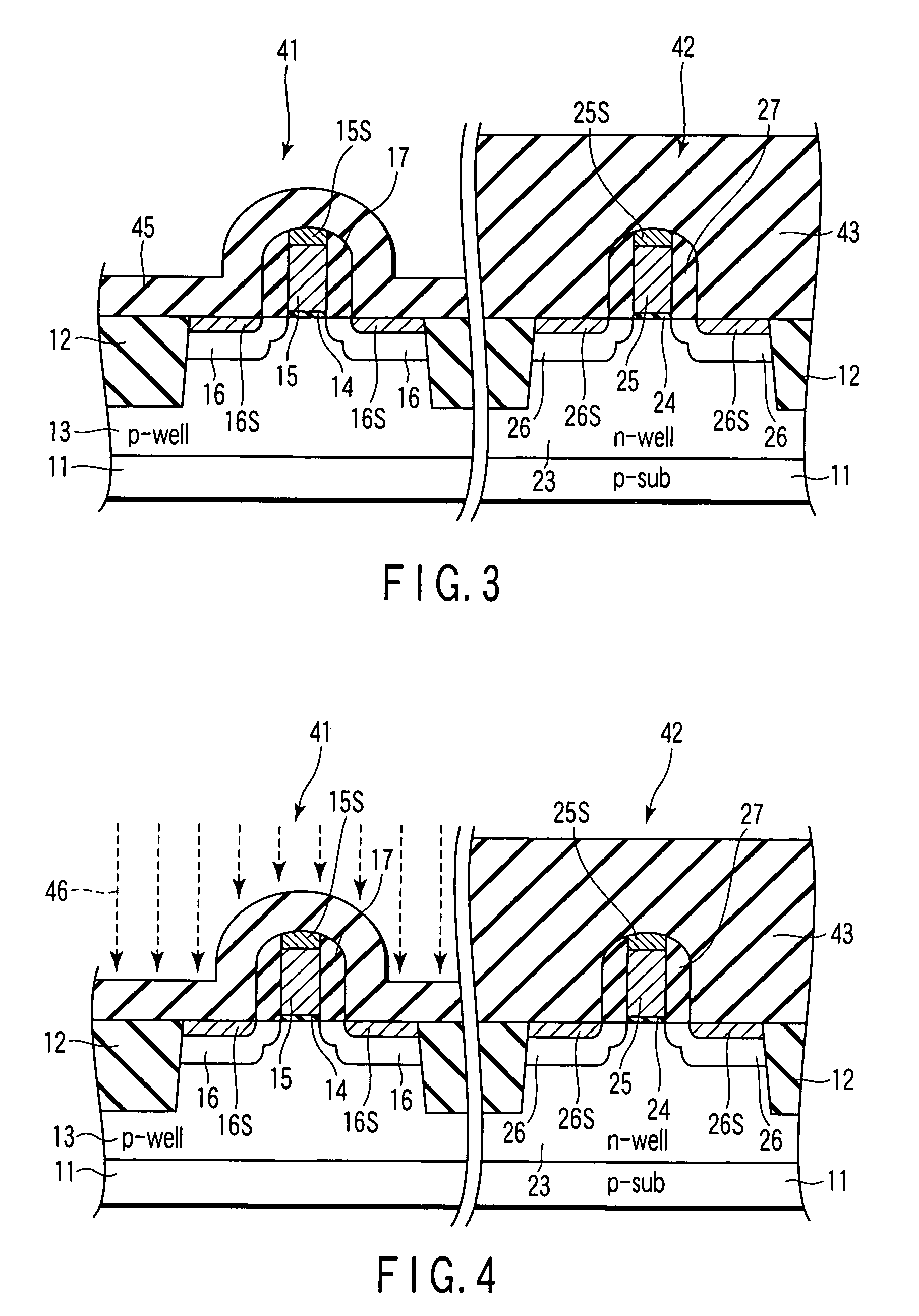Semiconductor device that is advantageous in operational environment at high temperatures
a technology of semiconductor devices and high temperature, applied in semiconductor devices, digital storage, instruments, etc., can solve the problems of reducing the mobility of electrons or holes (carriers), increasing the heat emitted from transistors, and becoming more and more sever
- Summary
- Abstract
- Description
- Claims
- Application Information
AI Technical Summary
Benefits of technology
Problems solved by technology
Method used
Image
Examples
first embodiment
[0030] A semiconductor device according to a first embodiment of the present invention is described with reference to FIG. 1. FIG. 1 is a cross-sectional view that schematically shows the semiconductor device according to the first embodiment.
[0031] As is shown in FIG. 1, an NMOS transistor N1 that is an N-type MOS transistor is provided on a P-well (p-well) 13 in a P-type semiconductor (e.g. silicon) substrate (p-sub) 11, which is isolated by a device isolation film 12. A PMOS transistor P1 that is a P-type MOS transistor is provided on an N-well (n-well) 23 in the same substrate 11. An interlayer insulation film 35 is provided so as to cover the transistors N1 and P1.
[0032] The NMOS transistor N1 comprises a gate insulation film 14, a gate electrode 15, source / drain regions 16, silicide layers 15S and 16S, spacers 17, an insulating layer 20, and source / drain contact plugs 31.
[0033] The gate insulation film 14 is provided on the P-well 13 in the semiconductor substrate 11. The g...
second embodiment
[0094] A semiconductor device according to a second embodiment of the invention is described with reference to FIG. 11. A description of the parts that are common to those in the first embodiment is omitted.
[0095] As is shown in FIG. 11, an NMOS transistor N2 is provided on the P-well 13 in the semiconductor substrate 11, and a PMOS transistor P1 is provided on the N-well 23.
[0096] The semiconductor device of the second embodiment differs from that of the first embodiment in that a HfW2O8 layer 61 is provided, as an insulating layer with a negative thermal expansion coefficient, over the silicide layers 16S, spacers 17 and silicide layer 15S. The HfW2O8 layer 61 has an thermal expansion coefficient of about −10×10−6 / K in a range between room temperature and about 800K.
[0097] Accordingly, when the temperature of the transistor N2 rises in operation, the HfW2O8 layer 61 contracts and a stress 18 occurs in a direction from the source / drain regions 16 towards the silicide layer 15S. ...
third embodiment
[0114] A semiconductor device according to a third embodiment of the invention is described with reference to FIG. 14. A description of the parts that are common to those in the first embodiment is omitted.
[0115] As is shown in FIG. 14, a PMOS transistor P2 is provided on the N-well 23. The third embodiment differs from the first embodiment in that an Al2O3 layer 71 is provided as an insulating layer over the silicide layers 26S, spacers 27 and silicide layer 25S. The Al2O3 layer 71 has a positive thermal expansion coefficient.
[0116] The fabrication method is substantially the same as that in the first embodiment, so a detailed description is omitted here.
[0117] According to the semiconductor device of this embodiment and the fabrication method thereof, the same advantageous effects as in the first embodiment can be obtained. Further, in the semiconductor device of this embodiment, the Al2O3 layer 71 is provided as the insulating layer of the PMOS transistor P2. The magnitude of ...
PUM
 Login to View More
Login to View More Abstract
Description
Claims
Application Information
 Login to View More
Login to View More - R&D
- Intellectual Property
- Life Sciences
- Materials
- Tech Scout
- Unparalleled Data Quality
- Higher Quality Content
- 60% Fewer Hallucinations
Browse by: Latest US Patents, China's latest patents, Technical Efficacy Thesaurus, Application Domain, Technology Topic, Popular Technical Reports.
© 2025 PatSnap. All rights reserved.Legal|Privacy policy|Modern Slavery Act Transparency Statement|Sitemap|About US| Contact US: help@patsnap.com



